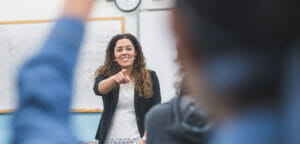
But I Didn’t Die: The Power of Mistakes in the Classroom
My name is Teacher, and my mistakes are Legion.
None of these mistakes are catastrophic. I haven’t lost my temper and pulled my hair out by the roots. I haven’t made grading errors that led to a 75 percent flunk rate. I haven’t written







